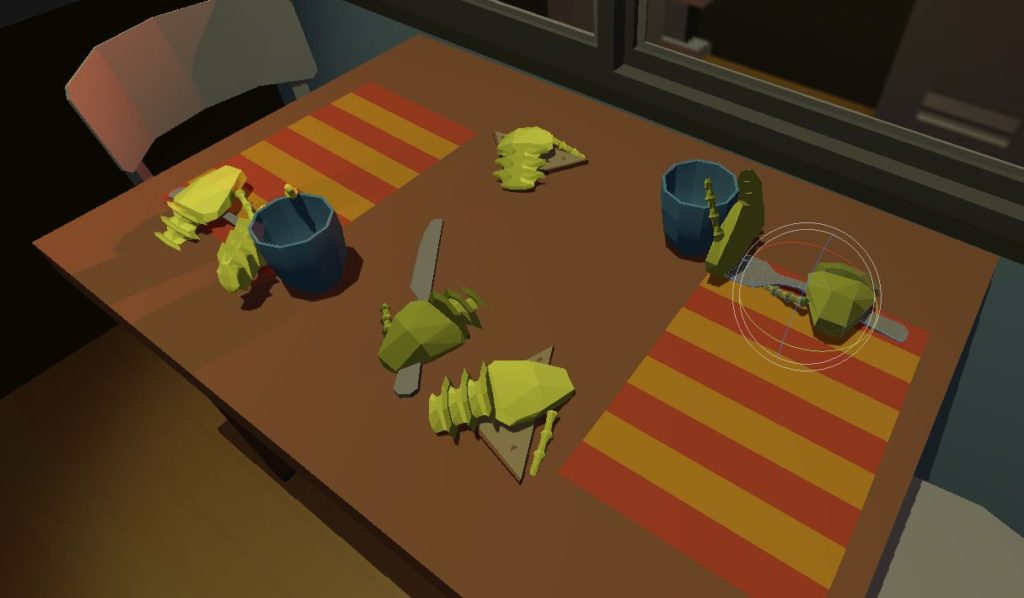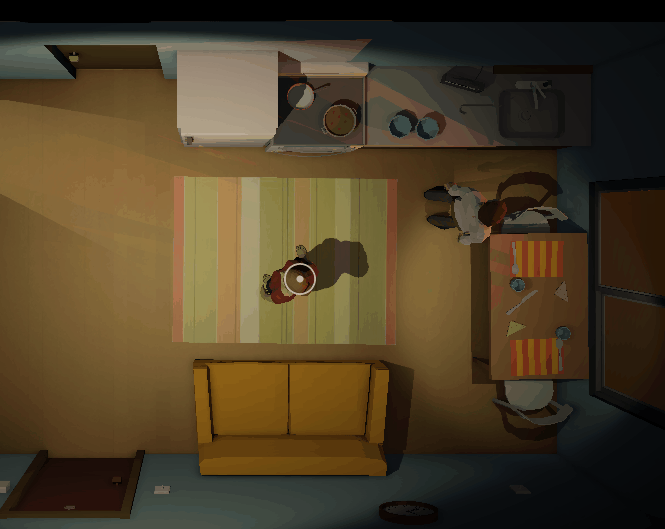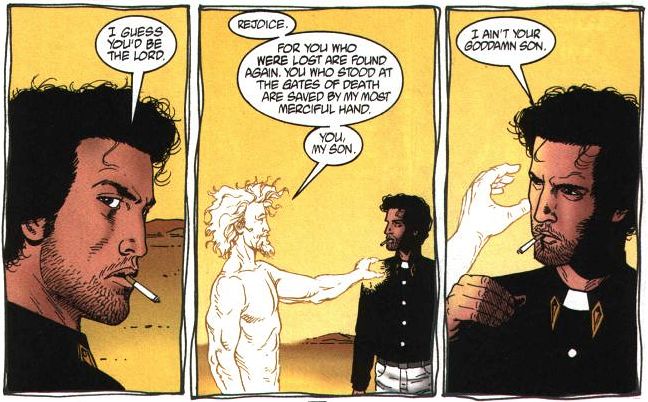The games I worked on when I was employed in AAA studios, were developed with every department (e.g. Art, Programming, Design) operating in parallel.
I’ve often compared this experience to a film studio that decides to start shooting a movie while the script is still in the drafting stages. So you end up with actors enacting scenes that they believe will make sense and costume and set design making props based on what they assume the movie should look like.
This method of working has often forced me, as an artist, to constantly re-do the same assets over and over, until the Design team has figured out what the hell the game is about. To put this in perspective, in one project we went from ‘third-person action’ to ‘match the body shape dance’ game…
As you can imagine, this is not the most productive way to work, and so, when I joined Jonathan Blow on The Witness, I was happy to realize he only brought in people as needed, making sure we had real problems to fix.
But for this to be possible, you need the skeleton of your game to be practically complete, and The Witness was almost 80%ish playable, with a lot of puzzles that never changed during the four years of art development until release.
The advantages of working this way, for me are very significant. Anyone that joins the project can instantly understand the vision. There is no “This is what I’m trying to do.” but more “This is what I’m doing, and you can experience it.” and the work that is added on top is building on a strong foundation. Another aspect and the reason for today’s post is that having a solid foundation allows you to understand if you are making progress in the game development, something that is hard to do when you are in the thick of production.
With The Witness anyone could play the game from start to end at any time and Jonathan was very adamant in making sure it stayed that way, forcing us sometimes to do some juggling on the art side (e.g., having ‘temp’ work hidden in the island, or just locally saved).
In the end, I feel it was something crucial and a good discipline to have, and I don’t remember a single time, in four years of development, that the game was unplayable for more than a few hours.
I’ve been trying to carry the same principles for Twelve Minutes, and the game had been fully playable, from start to end, until I began to work full time back in April.
I had to ‘open it apart’ to do the proper implementation of the gameplay systems I proposed in the prototype, and today, I’m happy (and relieved) to share that the game is once again fully playable from start to end!
It still ‘looks’ the same, with the same temporary assets, art, audio, animation, but it’s hopefully a solid foundation, ready to be built upon by the new people that will join the team.
As an example, characters can pick up objects from the floor, and in the prototype, you would move towards an object, and it would just appear in your inventory.
For this to work correctly, it means the actor needs to know how to stop before arriving at an object and grab it properly depending on where it is. That means not only custom animations but also an IK setup, so the hand reaches the object. It also means the action is no longer immediate, so I need to take into account the possibility of interruption, or if someone else decides to grab the same object, no matter how improbable it might be.

Another example is how you initiate a conversation. In the prototype, you just get close enough, and both characters turn and start talking, and that feels very gamey, especially if approaching someone from behind since they turn around without knowing you want to speak.
Now, if you try to initiate a conversation, as you approach the other character, you call his attention, making him turn, and once they are close to each other, the dialogue starts. And this gets slightly more complicated if both characters are moving, or if one of them is closing a door when the other wants to talk, etc.

This kind of granularity has been applied to every single system, from animation to audio, writing, art, etc.
If this was a car, it meant for last five months I had to fully disassemble it, make the proper version of every single part, and assemble it again. And during that time, there is no car, just tons of metal pieces spread out on the garage floor. And that for me is super scary, since your game ceases to exist, it becomes just a concept.
And so, I’ve been very focused on getting to this stage as soon as possible.
Besides the advantages I mentioned at the start of the post, this milestone allows me to have a much clearer idea of how much work is left to do. The amount of animations ( the last count was 600+ per character), dialogue, sound effects, character, and environment art.
It also means I can focus on the game design again. I’m not longer figuring out how a character opens a door, but why he is doing so.
And it means I can finally bring in the new set of crucial collaborators that will make or break the game, the writers!
They will be able to play the newest version for the first time and experience what the game is about, without me having to say it.
And I’ll be able to not only listen to their input on the story, pacing, exposition and character design, but give them the space to act on it, and see the practical results in the game, hopefully always playable throughout the process.
We can also start to figure out the ‘voices’ of each one of the game protagonists. At the moment, the dialogues are cringe worthy. English, is not my primary language and I put no effort in trying to convey emotions or personality, since I just wanted to see if the gameplay worked.
What I mean by ‘voices’ is that since there is no audio for the dialogue, you need to get the personality from the writing. How educated are the characters? Do they have an accent? Do they have a specific way of speaking or repeat certain words? One of my favorite examples is Garth Ennis work on The Preacher, where you can totally hear the way each character is speaking:

There have also been some exciting updates on the animation side, but I’ll leave that for a future post. For now, I’ll just share the first mocap animation in-game test (and be aware that the model, skinning and even the animation itself are just placeholders!)

I still have a long list of bugs to fix before the game is as smooth as I make it sound in this post, but hopefully next update I’ll be able to share a lot more about the writing team, as well as more detailed updates on art and animation!
Wow, this was interesting. Thanks for sharing.
Very well written and interesting as always, thanks. Congratulations on stepping into the next stage.
The mocap mention at the end is intriguing. Are you using stock mocap animations or making your own? And if so, how?
Also, I’d switch the fridge door to face the kitchen area when opened (some fridge doors can be switched). It’s much more convenient 😉
Really awesome insight, Luis. I’m a working 3D Artist right now and I’m always finding myself jumping into art too early when I’m working on small games on the side.
I love the note about giving characters a voice. Reminds me of Mark Twain and how he handled a lot of his books.